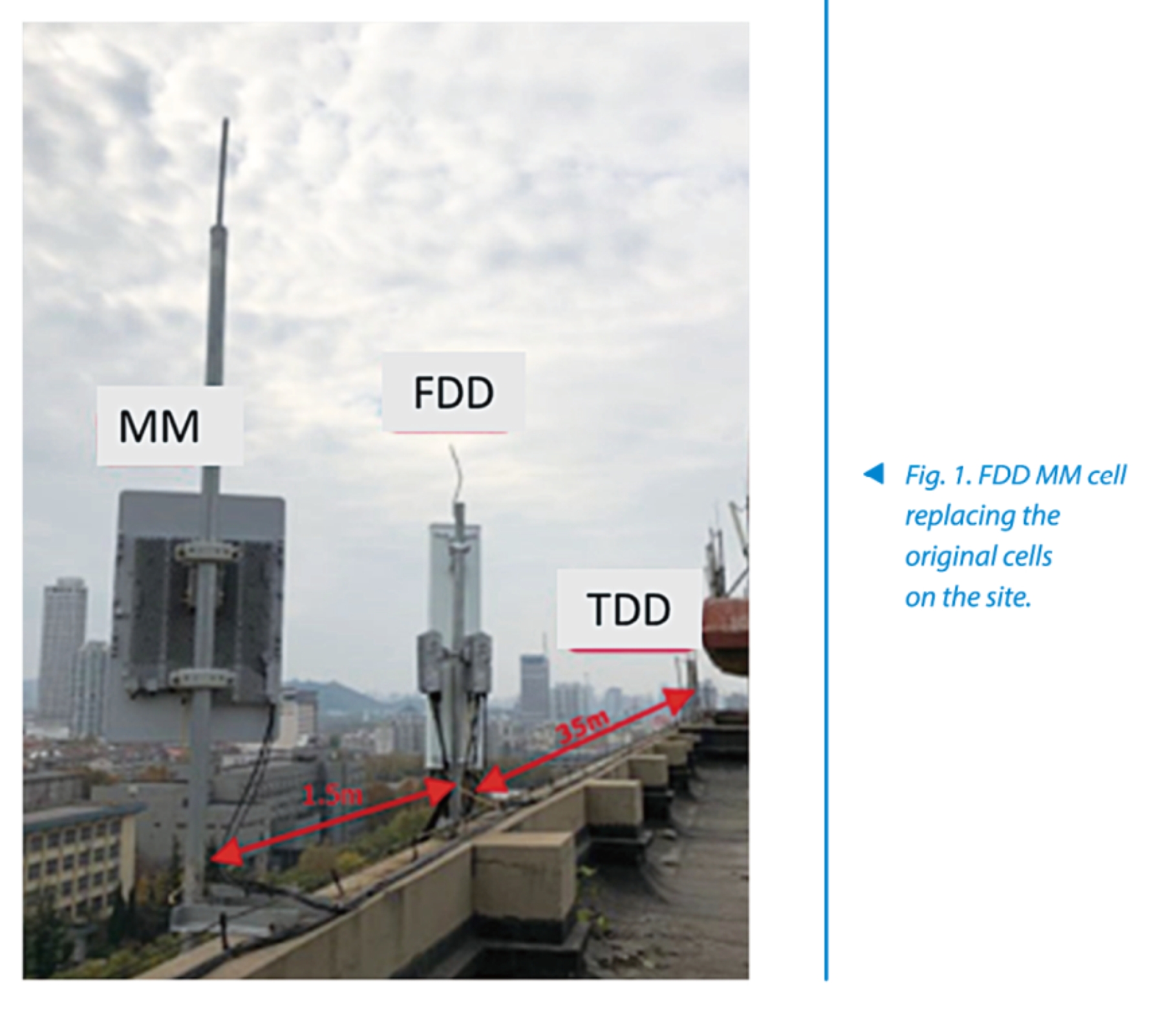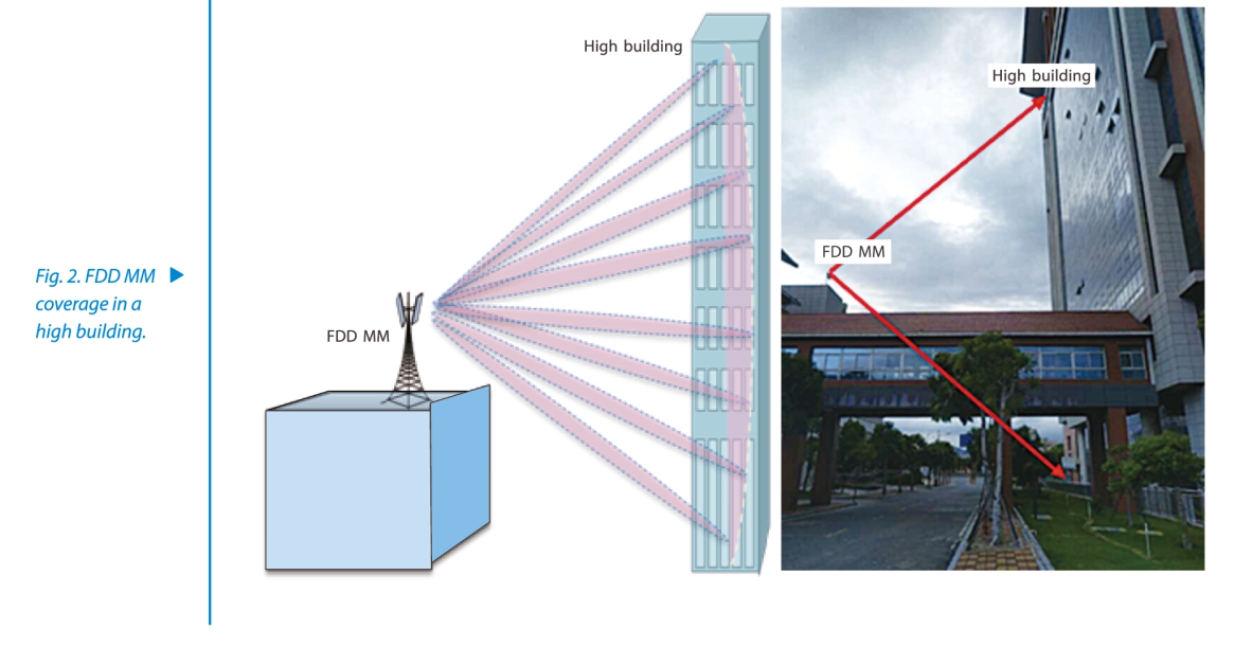ZTE FDD Massive MIMO: A Sharp Tool for Solving Network Capacity Bottleneck
Urgent Need for Improved Spectrum Efficiency
5G opens up infinite possibilities for applications, promising ultra-high-speed broadband, internet of everything (IoE), and ultra-low latency services. Ultra-high-speed broadband has commercial availability, but is constrained by network capabilities whereas IoE and ultra-low latency services need the development of the entire industry chain to become commercially available on a large scale. The arrival of 5G still requires a period of transition since large-scale deployments of 5G are expected to take place after 2022. Therefore, we need to look at the new 5G era from the perspective of a span of a decade, not just the ideal vision at the initial stage. Currently, upgrading the 4G network to the Gigabit network is a more direct way to bring benefits.
The rapid growth of wireless network traffic is self-evident. In the past few years, many mobile operators have deployed a series of functions to make 4G networks reach higher speeds, which mainly relies on three technologies: CA, 256QAM and high-order MIMO (including 4×4 MIMO and higher-order Massive MIMO). Among them, 57 operators have employed high-order MIMO (greater than 4×4 MIMO) in different regions around the world. It can be seen that the commercialization of Massive MIMO is accelerating, and it has become a powerful tool for carriers to solve the network capacity bottleneck.
Key FDD Massive MIMO Technologies
As one of the core 5G technologies, FDD Massive MIMO provides a site throughput much larger than that of the existing multi-antenna base station and greatly improves spectrum efficiency. The FDD Massive MIMO solution directly applies the key 5G technology to the 4G network and is compatible with the existing 4G terminals.
It has two benefits: First, multiple antennas used at the transmitter can improve the SNR at the receiver with the application of beam forming; second, through the use of multi-user spatial division, more parallel channels are generated to break the restriction of spectrum and greatly improve the spectrum efficiency.
In theory, the channel capacity can keep a linear growth relationship with the number of antennas to avoid data rate saturation. This is a common SDMA technology. The greatest advantage of Massive MIMO is to use the multi-dimensional space information of multiple antennas to realize a better multi-user spatial division technology. The implementation of Massive MIMO technology relies on two main factors: first, the multi-antenna hardware design, and second, the implementation and improvement of channel estimation and scheduling technology on software.
ZTE will make a new-generation Massive MIMO product ready for commercial test by the end of this year, which has stronger hardware capabilities, such as dual band and power sharing function, and higher performance gains. This will make ZTE continue to take the lead in the industry.
Application Scenarios of ZTE FDD Massive MIMO
As soon as ZTE's FDD Massive MIMO solution was introduced, it quickly attracted great interest of the operators and was the first to successfully complet the lab and field tests in China. After two years of hard work, the solution has been applied across the world, verified by a series of joint pre-commercial field tests with operators in Southeast Asia, Europe and Australia.
In September 2017, ZTE, in cooperation with operator A in Thailand, applied 3D MIMO technology to the campus of a local university to increase the capacity of a single cell by five times. In the following October, ZTE expanded its FDD Massive MIMO field trials and obtained good testing results in both Belgium and Australia. In particular, the industry's first FDD Massive MIMO site based on hybrid transmission modes has been completed. In August 2019, ZTE and operator K in Ukraine jointly carried out the FDD Massive MIMO field test with 15 MHz bandwidth. After a month's test and comparison, the Massive MIMO cell was proved to have better performance in PDCP traffic, RRC connected users, and PRB utilization rate than the traditional FDD cell.
ZTE has been accelerating the commercial use of FDD Massive MIMO with its products performing well in many commercial networks. There are three major scenarios especially suitable for deployment of Massive MIMO.
Large-Capacity Hotspot Area
After replacing the ordinary macro station with Massive MIMO site, the spectrum efficiency can be increased by up to three times and user-perceived throughput by up to 2.88 times.
Case 1: In the network of operator T in Thailand, Massive MIMO was deployed in the residential area near a school. Through the FTP load testing in the commercial network, it can be seen that the Massive MIMO cell achieved significant gains in user throughout. Compared with the original ordinary cell, the rate of the TM4 user was increased by 2.49 times, and that of the TM9 user by 2.88 times. It solves the congestion problem of hotspot cells.
Case 2: The FDD Massive MIMO deployment by a Chinese operator used another idea: The original ordinary FDD macro cell and three ordinary TDD macro cells were replaced by an FDD Massive MIMO cell on the site (Fig. 1).

Coverage in High Buildings
The second major application scenario is coverage in high buildings, such as high-rise residential and office buildings. Especially for some old high-rise residential buildings, the indoor distributed antenna system (DAS) is difficult to be deployed physically or financially, so there is a need for FDD Massive MIMO. The FDD Massive MIMO vertical antenna applies to scenarios with horizontal angles of no greater than 25 degrees and vertical angles of no less than 60 degrees. This meets the requirements of high traffic volumes in busy hours and also high-building coverage.
By testing the coverage and performance of the FDD Massive MIMO vertical antennas, and comparing them with the original indoor DAS, ZTE exhibited the advantages of the 3D-MIMO product in specific application scenarios. The test site for high-building coverage was a software garden complex, which has three indoor cells. The test scenario is shown in Fig. 2.

In-Depth Coverage
FDD Massive MIMO beam forming can be used to improve the SINR for a user, and provide in-depth coverage, especially enhanced edge user experience. ZTE deployed FDD Massive MIMO near a canteen in the Sichuan University for Nationalities, and performed a drive test around the canteen. Under the same edge rate requirement and along the same route, the FDD Massive MIMO cell could cover a longer distance, indicating increased depth of coverage. The detailed results are shown in Table 1.

With the gradual commercial use of FDD Massive MIMO, the FDD LTE operators who have 85% share of the global LTE connections can take the opportunity to apply Massive MIMO technology to improve the capacity, user experience and ROI of their networks and enter the high-speed network era.